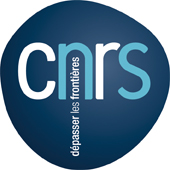Mitigating the Attraction Effect with Visualizations
People involved
Evanthia Dimara, Sorbonne Université and Inria
Gilles Bailly, CNRS and Sorbonne Université
Anastasia Bezerianos, University Paris-Sud & CNRS (LRI), Inria, and University Paris-Saclay
Steven Franconeri, Northwestern University

Abstract
Human decisions are prone to biases, and this is no less true for decisions made within data visualizations. Bias mitigation strategies often focus on the person, by educating people about their biases, typically with little success. We focus instead on the system, presenting the first evidence that altering the design of an interactive visualization tool can mitigate a strong bias – the attraction effect. Participants viewed 2D scatterplots where choices between superior alternatives were affected by the placement of other suboptimal points. We found that highlighting the superior alternatives weakened the bias, but did not eliminate it. We then tested an interactive approach where participants completely removed locally dominated points from the view, inspired by the elimination by aspects strategy in the decision-making literature. This approach strongly decreased the bias, leading to a counterintuitive suggestion: tools that allow removing inappropriately salient or distracting data from a view may help lead users to make more rational decisions.
Presentation
Project description

Self-reported participant demographics in both experimentsBets experiment). The position of the decoys affects the attractiveness of the target A for the left plot and C for the right plot. The letters A
and C, and coloring in the inlets are for illustration only, the actual stimuli
were the scatterplots at the bottom.

PARETO experiment: point estimates and 95% confidence intervals
for the attraction effects in baseline and pareto conditions.

Illustration of the attraction effect in scatterplot visualizations (the
Bets experiment [22]). The position of the decoys affects the attractiveness of the target A for the left plot and C for the right plot. The letters A
and C, and coloring in the inlets are for illustration only, the actual stimuli
were the scatterplots at the bottom.

Point estimates and 95% confidence intervals for the attraction
effects in baseline and deletion conditions.

Possible techniques to mitigate the attraction effect in scatterplots:
remove the dominated points (A), indicate visually the Pareto front (B).

Attraction effect in election: Bob has an
excellent education plan, while Alice is very strong in crime control. The
addition of Eve, a candidate similar but inferior to Alice, raises Alice’s
attractiveness as a candidate. (Photos Benjamin Miller, FSP Standard License,
icons by Ivan Boyco, CC-BY license)

Stimulus of the DELETION experiment. While the mouse was
pressed, a red outline indicated that the mouse will be deleting datapoints.
Participants deleted all datapoints but one – their final choice.

Stimulus of the PARETO experiment. Non-dominated datapoints
are indicated with a colored outline


